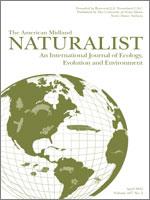Knowledge of seed ecology is important for the restoration of ecosystems degraded by anthropogenic activities. Current efforts to preserve and reintroduce populations of plant species endemic to Florida are hindered by a lack of information on demographic responses to human alteration. Comparisons of seed removal, germination, and establishment in both intact and degraded habitats will aid in management decisions for species in need of protection. Our objectives were to assess the impact of post-dispersal seed predation on plant populations in degraded and intact habitats, and to investigate the effects of habitat and microsite on seed germination and establishment. For five rare Florida scrub species with different seed sizes (Liatris ohlingerae, Eryngium cuneifolium, Polygonella basiramia, Hypericum cumulicola, Paronychia chartacea subsp. chartacea), we conducted a seed removal experiment with seeds exposed to insects and vertebrates, and to insects only, with a no-access control. We also planted seeds in replicated degraded and intact scrub sites (Spring Field Trial: in bare sand, Winter Field Trial: in bare sand, litter only, and under shrubs with litter), and determined background germination rates in a growth chamber. The contrasting pattern in seed removal among treatments suggested that habitat and seed size affect the likelihood of removal in Florida scrub. Species with large seeds such as L. ohlingerae were removed in higher frequency in degraded scrub, likely by vertebrates. Species with small seeds such as H. cumulicola and P. chartacea were removed by invertebrates and in higher frequency in intact scrub. E. cuneifolium had significantly more seedlings in degraded scrub and P. chartacea had significantly more germination in the intact scrub in the Spring Field Trial. E. cuneifolium, H. cumulicola and P. chartacea had higher germination in bare sand than in litter only or under shrubs. Our data indicate that scrub herbs are differentially vulnerable at particular life history stages and that this vulnerability can be context dependent. Restoration success will require a careful assessment of potential seed predators and abiotic conditions favoring germination and survival of study species in degraded habitat; efforts to increase heterogeneity in areas slated for restoration will likely promote the establishment of multiple targeted species.
How to translate text using browser tools
1 April 2012
Post-Dispersal Seed Predation, Germination, and Seedling Survival of Five Rare Florida Scrub Species in Intact and Degraded Habitats
Elizabeth L. Stephens,
Luz Castro-Morales,
Pedro F. Quintana-Ascencio
ACCESS THE FULL ARTICLE
It is not available for individual sale.
This article is only available to subscribers.
It is not available for individual sale.
It is not available for individual sale.

The American Midland Naturalist
Vol. 167 • No. 2
April 2012
Vol. 167 • No. 2
April 2012




